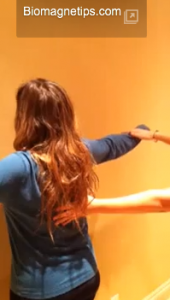Applied Kinesiology (AK) v.s. Biomagnetism Testing
In the pursuit of relying in an alternative method of illness diagnostic, or disfunction analysis, we compare Applied Kinesiology (AK) v.s. Biomagnetism Testing. Both techniques have several similarities but they are not exactly the same, we will try to explain the main differences which sets them apart.
Applied Kinesiology (AK)
Applied Kinesiology (AK) is an alternative medicine method used for diagnosis and determination of therapy according to the reputable and well known Wikipedia free encyclopedia. It should not be confused with kinesiology, which is the study of human movement. The essential premise of applied kinesiology, which is not shared by mainstream medical theory, is that every organ dysfunction is accompanied by a weakness in a specific corresponding muscle in what is termed the “viscerosomatic relationship.”
Applied Kinesiology was made famous and popular by George J. Goodheart, a chiropractor practitioner during 1964. He later founded the International College of Applied Kinesiology in 1976 based in Montreal Canada, which now has chapters in 15 different countries offering a postgraduate specialty.
Applied Kinesiology is based fundamentally in muscle testing, which can be practiced in several different ways. The most common one is utilizing your arms, and this can be done either standing up or laying down. A manual muscle test in AK is conducted by having the patient resist using the target muscle or muscle group while the practitioner applies a force. A smooth response is sometimes referred to as a “strong muscle” and a response that was not appropriate is sometimes called a “weak response”.
Watch the short video below.

Biomagnetism Testing
Biomagnetism Testing in it’s nature is very similar to applied kinesiology or muscle testing, since the same principles apply, evaluating manual testing of the structural body to search for unbalanced organs in the human body. Dr. Richard Broeringmeyer in the 1980’s discovered a correlation between the ph balance of the body’s organs and the magnetic field. The basic and most widely form of biomagnetic testing is done utilizing the patients feet like the video shown below.

Biomagnetism Testing is the fundamental of biomagnetism therapy, since it is the very basic procedure to diagnose the patient utilizing therapy magnets and placing them in the particular biomagnetic pair to be analyzed. According to Dr. Isaac Goiz a good therapist should scan all the main biomagnetic pairs to get a good diagnosis of what the patient’s body really needs. This implies placing a magnet in every single biomagnetic pair of his body, and testing every single one of them, one at a time. This means that a therapy magnet is placed in every single organ or gland, one by one, and the feet are tested for a response similar to the applied kinesiology (AK) procedure. Through a binary (extention-contraction) dialogue between therapist and bodily cells, feet respond by either shorting or lengthening depending of the particular polarity of the patient, and the geolocation where the therapy is practiced, since the earth magnetic field shifts depending on what parallel you are located.
Biomagnetism Testing takes practice in order for the therapist to be effective, the use of a magnet either ceramic or neodymium can be used to test the 333 known pairs up to date, as long as they have a 1,000 to 3,000 gauss reading (pulling force). After acquiring more confidence in the practice, a biomagnetism therapist can scan the 333 pairs without any magnet and verify which ones need attention, but using a magnet will actually magnify the foot response which makes it particularly useful and more reliable making it fool proof. The patient can even hold the magnet themselves as long as they are properly placed and advised by the therapist, or can be placed by an assistant which gains practice after several biomagnetism testing sessions.
NOTE: Before practicing biomagnetism we highly recommend reading our disclaimer to verify that you are eligible to be treated with this therapy. Biomagnetism may not be for everybody, specially if you have a pacemaker, or have been recently exposed to cancer treatments.
Comments are closed.